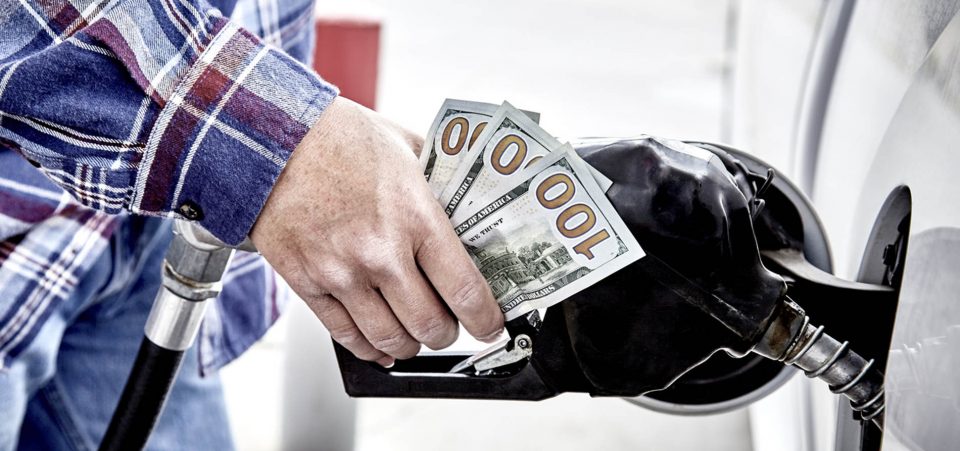Consumers to Spend Less Because of Higher Gas Prices, Harming Economy in 2017
American and Canadian consumers could end up spending $50.0 billion more for gas in 2017. Rising oil prices have terminated $2.00-per-gallon gasoline in the U.S. Of course, the predictable outcome of higher gas prices is that consumer spending could suffer just as salaries were starting to increase. (Source: “Gas prices likely to surge in 2017,” Beaumont Enterprise, January 5, 2017.)
Is it any wonder Macy’s Inc (NYSE:M) stock has lost almost 30% of its value over the past month? Retailers and consumers in the U.S. will feel the pinch. But it’s not just a problem for the United States; low gas prices encourage consumers to pump the money back into the economy. The reverse happens with higher gas prices said JPMorgan Chase and Co. (NYSE:JPM) (Source: “How Falling Gas Prices Fuel the Consumer,” JPMorgan Chase and Co., October 2015.)
All goods and services will likely increase in price. It’s not hard to imagine it. Higher gas prices mean that the cost of doing business will increase. It will have a major inflationary effect, even as we are told inflation remains close to zero. Yet the cost for groceries, food, or your daily commute (whether private or public) will be going up.
In Canada, many provinces could see gas prices increase by at least $0.05 a liter (over $0.20/gallon). And that’s just considering cost that carbon taxes and the like. Indeed, drivers and consumers in Ontario and Alberta could see the biggest increases. (Source: “Gas prices are rising: Here’s how it will make living in Canada more expensive,” Global News, January 3, 2017.)
Gasoline market observers predict 2017 could bring some of the highest prices, for both gasoline and diesel, in years. Carbon taxes and OPEC increases, not to mention continued Middle East volatility, could boost prices more than anyone had expected. (Source: Ibid.)
The lowest gas prices are in Saskatchewan ($1.06 per liter) and Manitoba ($1.074 per liter). The highest prices are in British Columbia ($1.238 per liter) and Newfoundland and Labrador ($1.387 per liter). (Source: Ibid.)
Then, of course, there are unpredictable factors that can affect gas prices. Severe weather, refining issues, and sudden changes in the price of oil on world markets. Meanwhile, the way the carbon tax or cap-and-trade system works could create its own inflationary effect on gas—and overall—energy prices.
Cap-and-trade relies on a market mechanism of supply and demand. It is incremental in effect. The cost of carbon dioxide emissions could be higher in 2018 than 2017. Meanwhile, even as carbon taxes and the like have been adopted, the public transportation infrastructure has not improved.
This means consumers have no incentive to drive less. They will also forget just how much more they are paying at the pump because of greenhouse gas (GHG) emissions.






